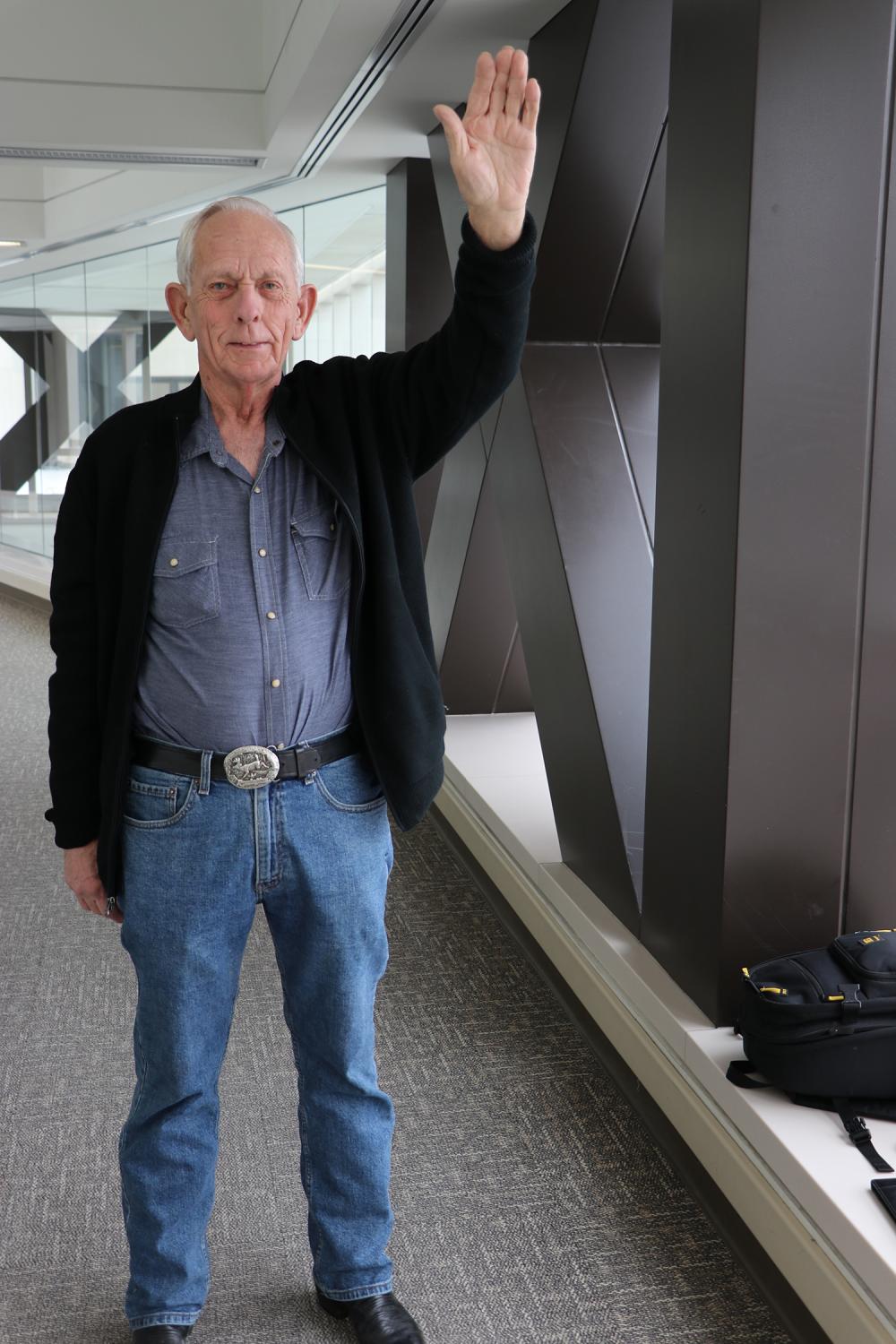Rollie chose reverse shoulder replacement to get his quality of life back
For the first time in years, Rollie Dunbar can raise his left arm above his head. He can move the arm with no pain and none of the weakness he once felt in his shoulder. He can do the things he loves to do, like rebuilding a 1948 Chrysler Coupe, pain-free.
Most people can take those simple arm movements for granted. But injuries and years of wear and tear had taken a toll on Rollie’s shoulder.
His rotator cuff—the group of muscles and tendons that keeps the shoulder joint stable and helps it move properly—was damaged beyond repair. He could hold his left arm straight out, but that was as high as he could lift it.

“When you can’t lift your arm, it’s time to do something,” says Rollie, 75, who is retired after many years as a building contractor in Washington, Iowa, and now lives in Moline, Illinois.
Choosing the right shoulder replacement option
A standard shoulder replacement wouldn’t work for Rollie, because a standard shoulder replacement requires a healthy rotator cuff to control the joint. Instead, he opted for a reverse shoulder replacement, an increasingly popular choice for people with severe damage to the rotator cuff or the joint.
University of Iowa orthopedic surgeon Brendan Patterson, MD, performed the surgery in December 2017. Soon after, Rollie was back to living his normal life.
“I can move my arm almost anywhere I used to be able to move it,” he says. “I can touch the back of my head—all that good stuff I couldn’t do for a long time.”
Improved shoulder movement, even without a rotator cuff
The shoulder is a ball-and-socket joint. The ball is on the arm bone and fits into a socket where the arm bone meets the shoulder. In a reverse shoulder replacement—also known as reverse shoulder arthroplasty—the ball and the socket switch places. The ball on the arm bone is surgically removed and replaced with an artificial socket, while the socket on the shoulder is replaced with an artificial ball.
“It changes the biomechanics of the shoulder,” Patterson says. “It allows the deltoid—the large muscle on the top of the shoulder—to do the job of elevating the arm over your head. This means the shoulder can operate with improved function, even without a well-functioning rotator cuff.”
Reverse shoulder replacement was approved by the Food and Drug Administration in 2004. Patterson, who specializes in shoulder surgery and is actively involved in shoulder research, has been closely following studies on reverse shoulder replacement and how patients are doing after they have the surgery.
“Multiple different studies show very good longevity of these implants with long-term follow-up,” Patterson says. “Done appropriately and for the right patients, it can give a great result.”
Another benefit: Easier recovery for most patients
Patterson says that, unlike with a standard replacement, recovery from reverse shoulder replacement usually doesn’t require any special physical therapy.
Rollie did a regimen of light exercises at home, on his own, with no need for the expense or time commitments of working with a physical therapist. Soon he was out in the garage again, working on rebuilding that 1948 Chrysler, without pain and with full use of his shoulder.
“It’s not heavy work, but it’s a lot of tinkering around,” Rollie says. “I can still do that pretty good—for an old man!”